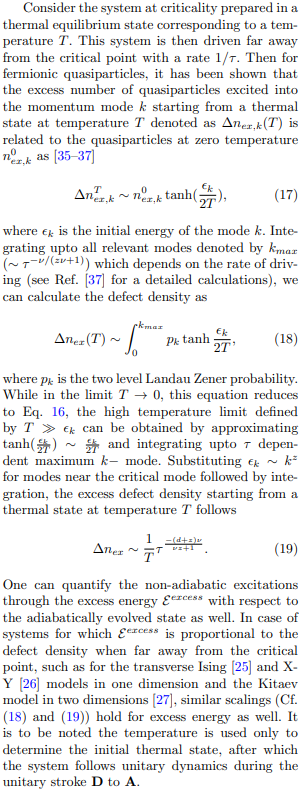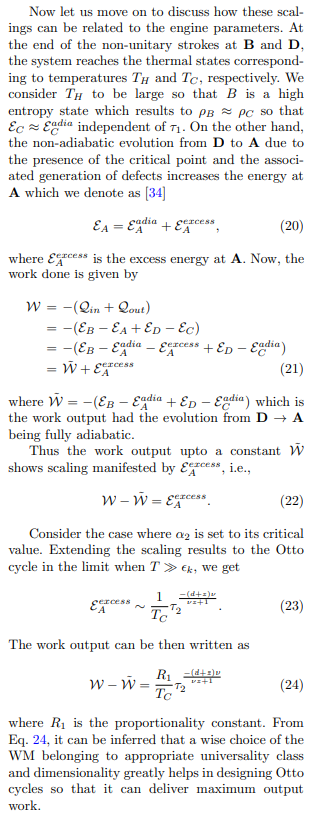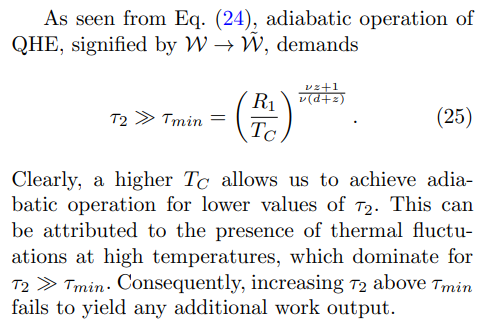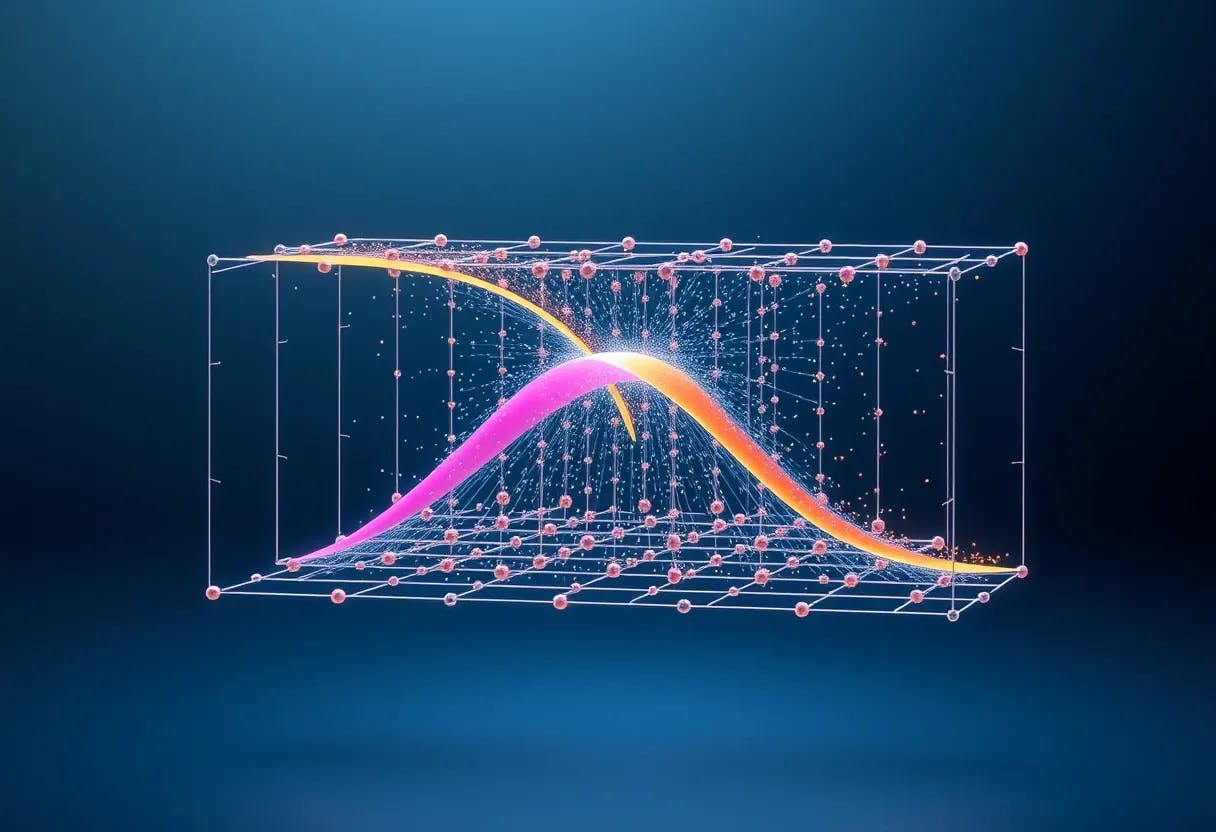Authors:
(1) Revathy B S, Raman Research Institute, Bengaluru, 560080, Karnataka, India and Corresponding author;
(2) Victor Mukherjee, Department of Physical Sciences, Indian Institute of Science Education and Research Berhampur, Berhampur, 760010, Odisha, India;
(3) Uma Divakaran, Department of Physics, Indian Institute of Technology Palakkad, Palakkad, 678623, Kerala, India.
Table of Links
3 Many body quantum Otto cycle
4 Universal scalings in work output
5 Transverse Ising model as working medium
4 Universal scalings in work output
The two unitary strokes of the quantum Otto cycle involve driving the Hamiltonian of the WM from one parameter to another. During this driving, the quantum critical point may or may not be crossed. Let us quickly revisit universal scalings in the non-equilibrium dynamics of a quantum system which is initially prepared in the ground state of the Hamiltonian, and is driven through the critical point linearly with a speed 1/τ . The diverging relaxation time close to the CP results in loss of adiabaticity, and thus generation of defects (excitations) no matter how slowly the CP is crossed [30–33]. The density of such defects nex follows a universal power law with the rate of driving where the power is determined by the critical exponents and dimensionality of the system, and is given by

Here nex denotes the defect density, ν is the exponent associated with correlation length and z is the dynamical exponent with d being the dimensionality of the system. This scaling between the defect density and the rate of driving is called the Kibble-Zurek scaling which connects the equilibrium critical exponents with the non-equilibrium dynamics. However, this scaling gets modified when the driving starts from a thermal equilibrium state as opposed to the ground state of the system; In Refs. [34–37], the authors consider the case when the driving starts from the critical point and obtain a scaling of defects as a function of temperature and the driving rate, which we present below.



This paper is available on arxiv under CC BY 4.0 DEED license.

